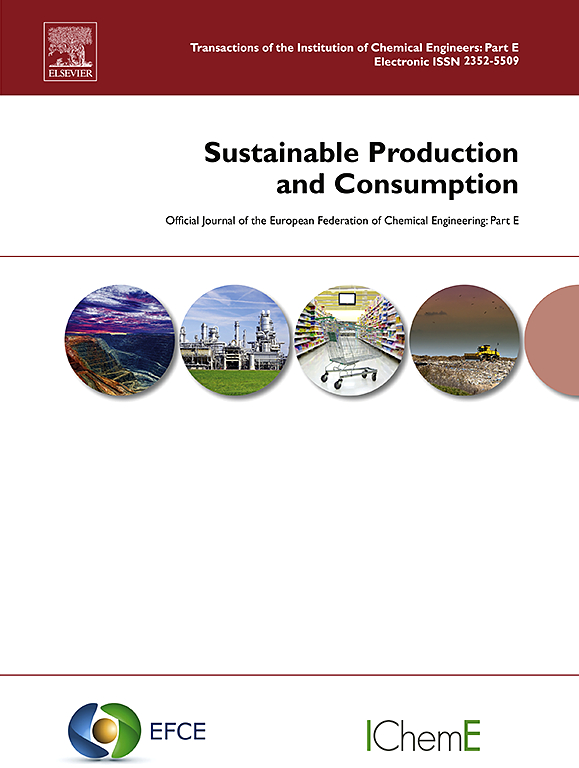An Environmentally-Extended Input-Output analysis of province-level carbon emissions from energy use in China's food system
IF 10.9
1区 环境科学与生态学
Q1 ENVIRONMENTAL STUDIES
引用次数: 0
Abstract
This study aims to investigate the province-level carbon emissions from energy use in China's food system including direct and indirect emissions in both pre- and post-agricultural production using Environmentally-Extended Input-Output (EEIO) analysis. It also analyzes the determinants of emission intensity in China's food system using a panel regression model. The results show that there was a large spatial variation in energy-related carbon emissions, intensity, and per capita emissions in China's food system among provinces, due to socioeconomic factors and agricultural endowments. Shandong, Sichuan, Hubei, and Heilongjiang were consistently ranked as the largest provinces of carbon emissions from energy use in the food system. On the contrary, provinces including Beijing, Tianjin, Shanghai, Hainan, Ningxia, and Qinghai produced significantly lower emissions. Additionally, fossil fuels were still the major energy sources of energy-related emissions in China's food system for most provinces. For factors affecting the emission intensity, most of them exhibited disparate effects on the emission intensity in different regions and on the national level. For instance, the expansion of agricultural land per capita increased emission intensity in eastern and central China but decreased in western China. The expansion of irrigation areas raised the emission intensity in eastern China while decreasing in central China. The study concludes that there has been significant progress in the emission reduction of China's food system with most provinces seeing a decline in energy-related emissions, intensity, and per capita emissions. Moreover, incorporating various socioeconomic and agricultural factors at the provincial level, it is necessary to optimize regional policies to effectively address the various demands for reducing carbon emissions within the food system, while fostering regional collaboration and complying with national directives. Also, a transition from traditional fossil fuel use along the agricultural supply chain to renewable energy is urgent for low-carbon food system transformation in China.
中国粮食系统能源使用的省级碳排放环境扩展投入产出分析
本研究旨在利用环境延伸投入产出(EEIO)分析方法,研究中国粮食系统能源使用的省级碳排放,包括农业生产前和农业生产后的直接和间接排放。本文还利用面板回归模型分析了中国粮食系统排放强度的决定因素。结果表明:受社会经济因素和农业禀赋的影响,中国粮食系统能源相关碳排放、强度和人均碳排放在各省之间存在较大的空间差异;山东、四川、湖北和黑龙江一直被列为粮食系统能源使用碳排放量最大的省份。相反,北京、天津、上海、海南、宁夏和青海等省份的排放量明显较低。此外,化石燃料仍然是中国大多数省份粮食系统中能源相关排放的主要能源来源。在影响排放强度的因素中,大多数因素在不同区域和国家层面上对排放强度的影响存在差异。例如,中国东部和中部地区人均农业用地的扩大增加了排放强度,而西部地区则降低了排放强度。灌溉面积的扩大使东部地区的排放强度上升,中部地区的排放强度下降。该研究得出的结论是,中国粮食系统的减排取得了重大进展,大多数省份的能源相关排放、强度和人均排放量都有所下降。此外,考虑到省一级的各种社会经济和农业因素,有必要优化区域政策,以有效解决粮食系统内减少碳排放的各种需求,同时促进区域合作并遵守国家指令。此外,从传统的化石燃料在农业供应链上的使用向可再生能源的过渡是中国低碳食品体系转型的迫切需要。
本文章由计算机程序翻译,如有差异,请以英文原文为准。
求助全文
约1分钟内获得全文
求助全文
来源期刊

Sustainable Production and Consumption
Environmental Science-Environmental Engineering
CiteScore
17.40
自引率
7.40%
发文量
389
审稿时长
13 days
期刊介绍:
Sustainable production and consumption refers to the production and utilization of goods and services in a way that benefits society, is economically viable, and has minimal environmental impact throughout its entire lifespan. Our journal is dedicated to publishing top-notch interdisciplinary research and practical studies in this emerging field. We take a distinctive approach by examining the interplay between technology, consumption patterns, and policy to identify sustainable solutions for both production and consumption systems.
 求助内容:
求助内容: 应助结果提醒方式:
应助结果提醒方式:


